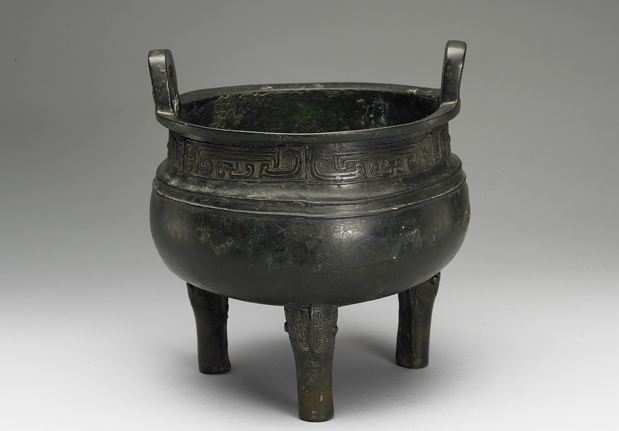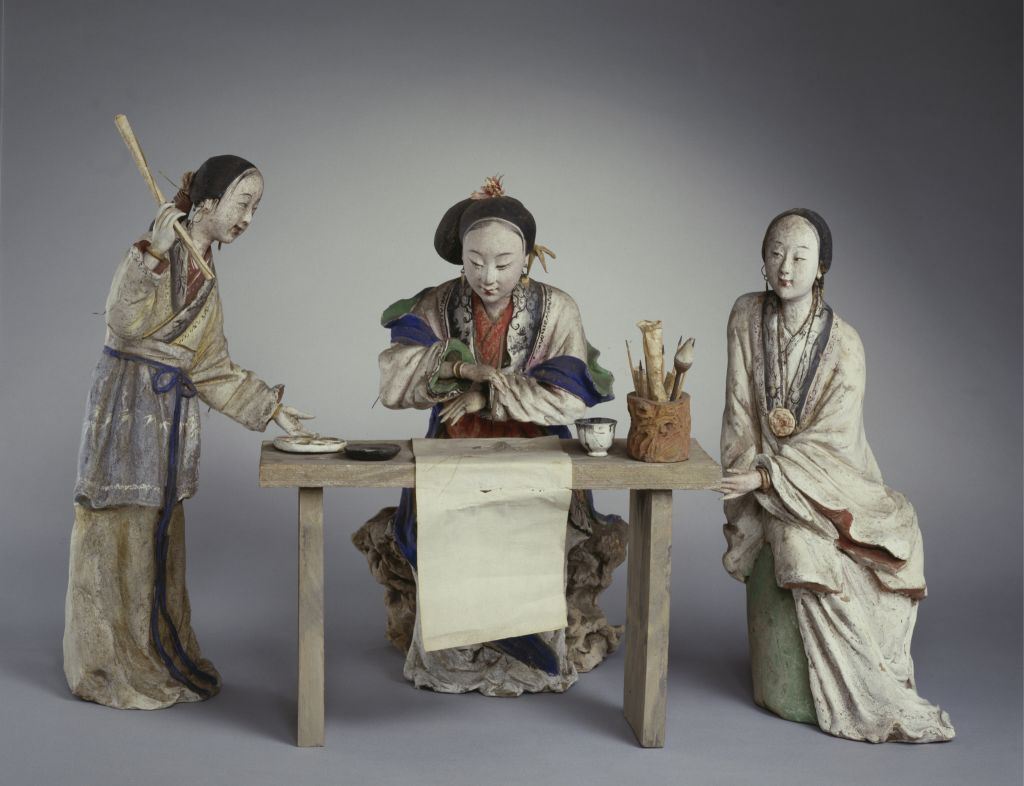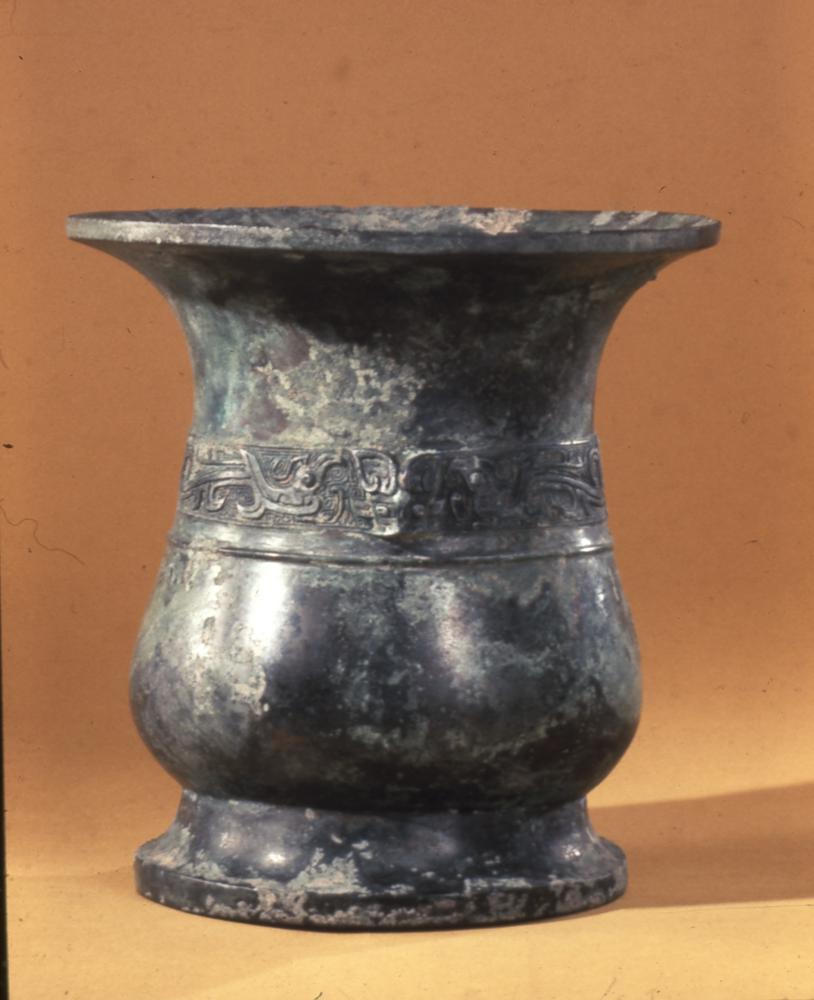[Taohe Stone Carved Lanting Assembly Inkstone]
Taohe Stone Carved Lanting Assembly Inkstone, Song Dynasty, 22.4 cm long, 13.5 cm wide and 6.8 cm thick
The rectangle of the inkstone, the surface of the inkstone and the shallow relief of the four sides of the inkstone, depicts the scene when Wang Xizhi and Xie An and others gathered at the Lanting in the shadow of Kuaiji Mountain in the ninth year of Yonghe in the Eastern Jin Dynasty (353). Wang Xizhi’s famous calligraphy “Preface to the Orchid Pavilion” describes the event. The main content of the inkstone surface is the picture of Orchid Pavilion, with pavilions and pavilions, mountains and mountains, surrounded by auspicious clouds, like a fairyland. The author also uses Qushui as the ink pool, which is semi-surrounded by a river channel. There are hollow tree trunks, building fences and small bridges on the ink pool. The pool is connected by a small bridge, which is ingenious and appropriate. The four side walls of the inkstone are carved with a picture of the Xiu Huan landscape, one side of which is inscribed with “Bu Taoist” and “Yuan □”. There are more than 40 characters in the scene, sitting by the forest stream, or talking, or cooking tea, painting, meditation, fishing, reading, boxing, etc. There are also pictures of bathing geese, depicting six geese playing in the water, on the bank, under the trees, or swimming, or pecking, or singing. The back of the inkstone is covered by the concave hand, which is in a slope shape
This inkstone is exquisite and simple, thick in paste, and bean-green. It is the product of Song inkstone handed down from generation to generation. It was collected by Wu Zhan at the end of the Ming Dynasty
Taohe inkstone, also known as Taohe inkstone, Taohe inkstone and Taohe inkstone, is one of the four famous inkstones in China. It has been famous at home and abroad since the Tang and Song Dynasties, and has a history of more than 1300 years. Taohe stone, the raw material of Taohe inkstone, is a kind of hydrous rock, also known as diabase. It is named after its production at the bank of Taohe River, Taoyan Township, Zhuoni County, Gannan Tibetan Autonomous Prefecture, Gansu Province. This place originally belonged to ancient Taozhou, hence its name. The Taohe inkstone has many textures. The stone color is basically green, and there are varieties of dark green, green, dark green, emerald green, light green, gray-green and other colors. Therefore, some people confuse it with Songhua River stone and green end stone. Liu Gongquan, a famous calligrapher of the Tang Dynasty, wrote in his “On Inkstone”: “Qingzhou is the first place to store inkstone, followed by Jiangzhou, and then Duan, She and Lintao (now refers to the area of Zhuoni in Gansu Province).” This is the earliest evaluation of Tao inkstone seen by scholars so far. It can be seen that Tao inkstone had enjoyed the status of Tongduan and She inkstone. The popularity of Tao inkstone began in the Song Dynasty and was paid tribute to the imperial court as a local product. It gradually replaced the red silk inkstone that had stopped mining and became one of the “four famous inkstones”. Zhao Xihu, a connoisseur of the Song Dynasty, once said in his “Dongtian Qinglu Collection • Identification of Ancient Inkstone”: “Except for the Duan and She stones, only the Taohe greenstone is the most valuable in the north, green as blue, moist as jade, and the ink does not reduce the rocks under the Duan River, but the stone is at the bottom of the deep water of the river, not caused by human resources, and it is priceless.” In fact, Taohe inkstone is not noble in origin, but originally only a kind of stone sharpening. The Taohe River basin was the territory of the Xixia regime in the Song Dynasty. The Xixia people often used this stone as military materials to sharpen their swords. For the literati of the Song Dynasty, Taohe inkstone stone is rare, and it is a very popular “foreign import”, so it is highly respected. For example, Su Dongpo praised the Taohe inkstone collected by Huang Tingjian in “The Inscription of the Taohe Inkstone Benefited by Lu Zhi”: “Wash it and sharpen it, and hair it with gold and iron. Cut it into red, and it is firm and dense. At the age of Bingyin, fight north and south. Give it to Huang Luzhi.”
![图片[1]-Taohe Stone Carved Lanting Assembly Picture Inkstone-China Archive](https://chinaarchive.net/Song dynasty/Stationery/53574[1024].jpg)
![洮河石雕兰亭集会图砚拓片 图片[2]-Taohe Stone Carved Lanting Assembly Picture Inkstone-China Archive](https://chinaarchive.net/Song dynasty/Stationery/53573[1024].jpg) 洮河石雕兰亭集会图砚拓片
洮河石雕兰亭集会图砚拓片![洮河石雕兰亭集会图砚拓片 图片[3]-Taohe Stone Carved Lanting Assembly Picture Inkstone-China Archive](https://chinaarchive.net/Song dynasty/Stationery/53594[1024].jpg) 洮河石雕兰亭集会图砚拓片
洮河石雕兰亭集会图砚拓片![洮河石雕兰亭集会图砚拓片 图片[4]-Taohe Stone Carved Lanting Assembly Picture Inkstone-China Archive](https://chinaarchive.net/Song dynasty/Stationery/53586[1024].jpg) 洮河石雕兰亭集会图砚拓片
洮河石雕兰亭集会图砚拓片![洮河石雕兰亭集会图砚拓片 图片[5]-Taohe Stone Carved Lanting Assembly Picture Inkstone-China Archive](https://chinaarchive.net/Song dynasty/Stationery/53567[1024].jpg) 洮河石雕兰亭集会图砚拓片
洮河石雕兰亭集会图砚拓片![洮河石雕兰亭集会图砚拓片 图片[6]-Taohe Stone Carved Lanting Assembly Picture Inkstone-China Archive](https://chinaarchive.net/Song dynasty/Stationery/53568[1024].jpg) 洮河石雕兰亭集会图砚拓片
洮河石雕兰亭集会图砚拓片





